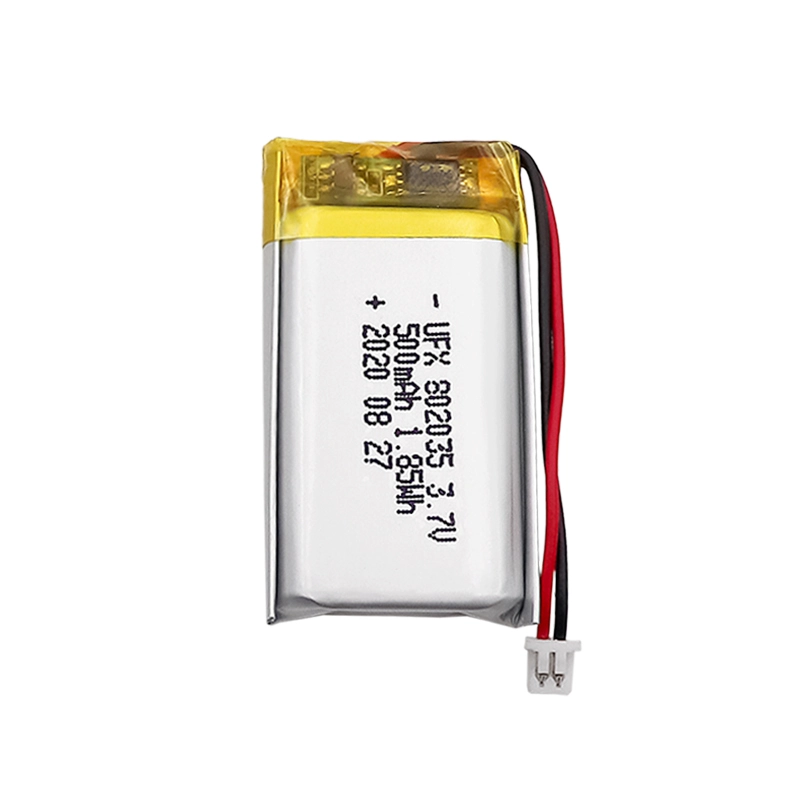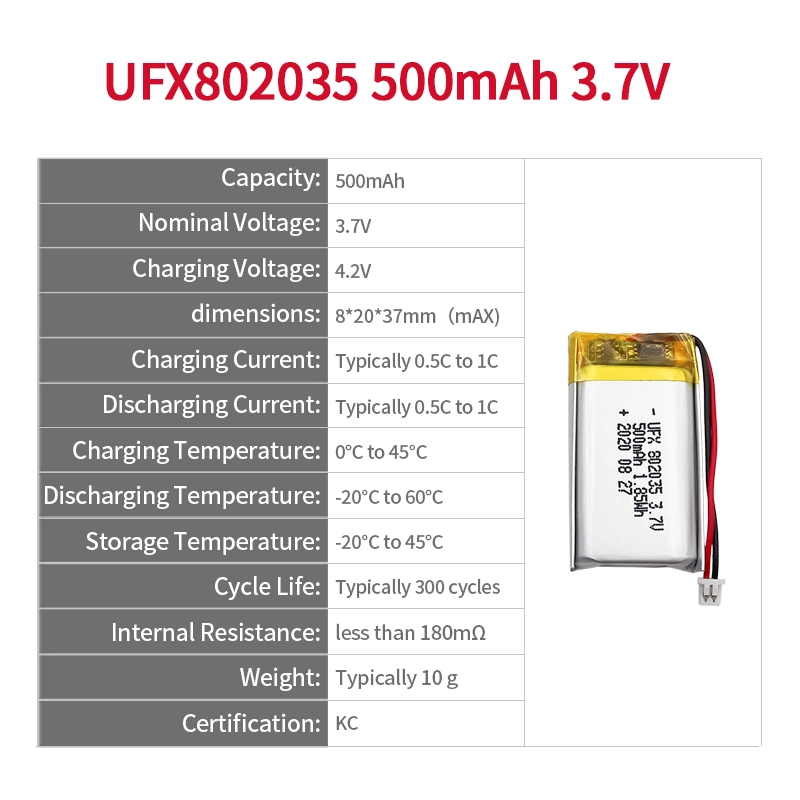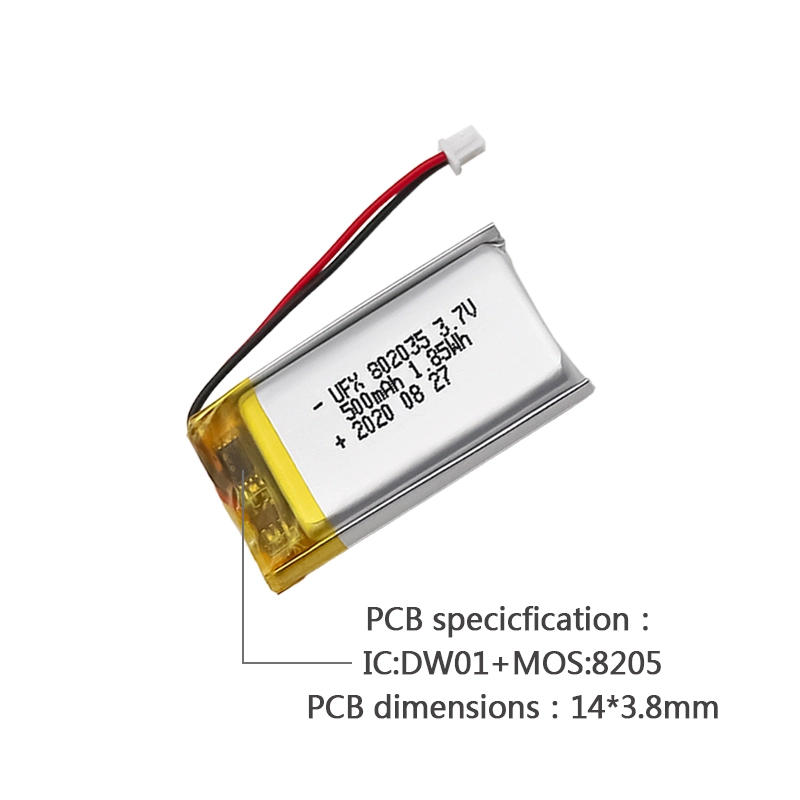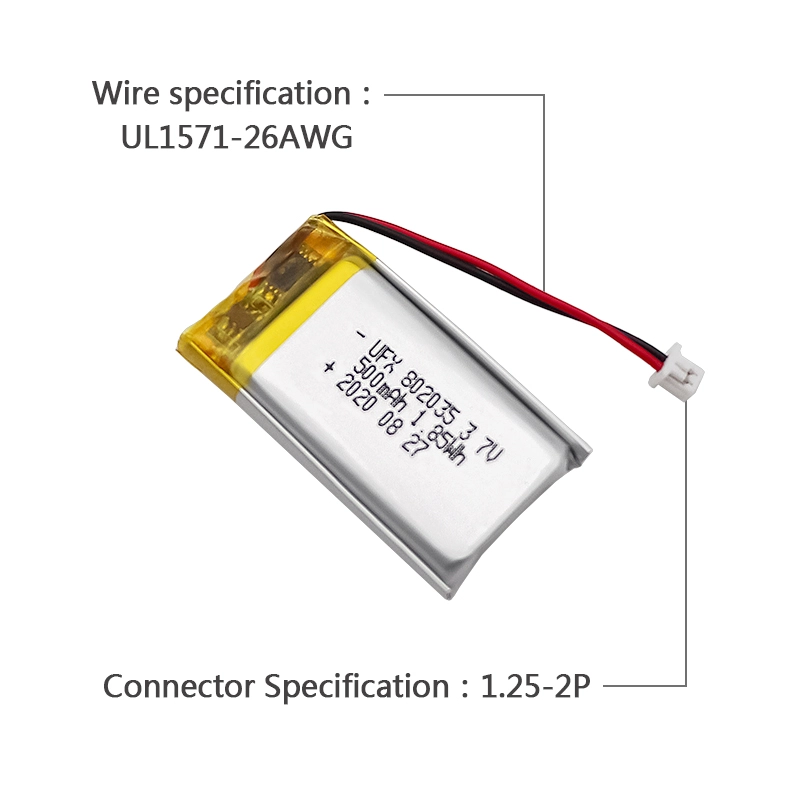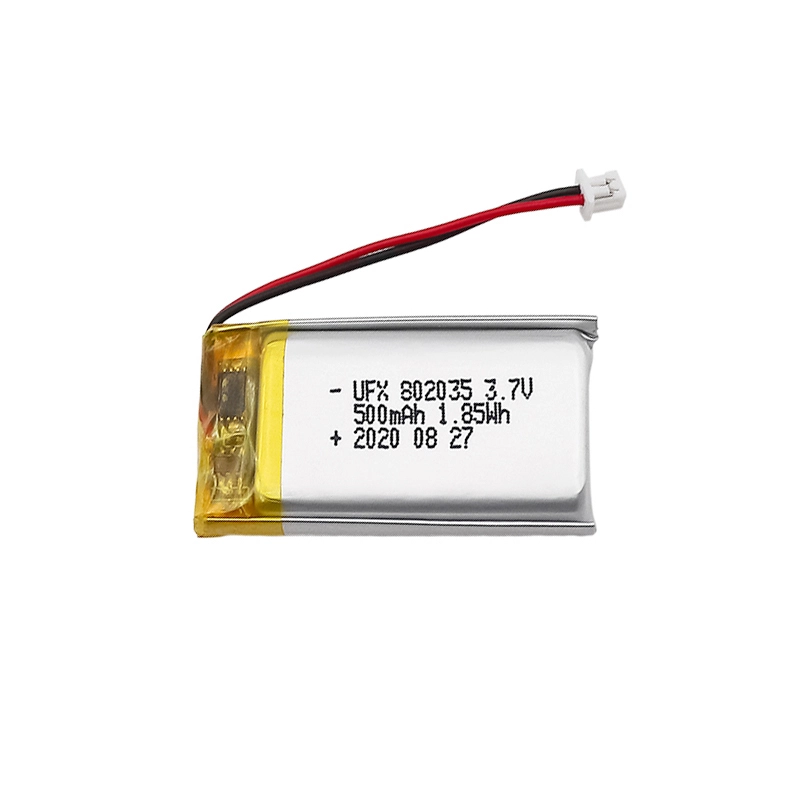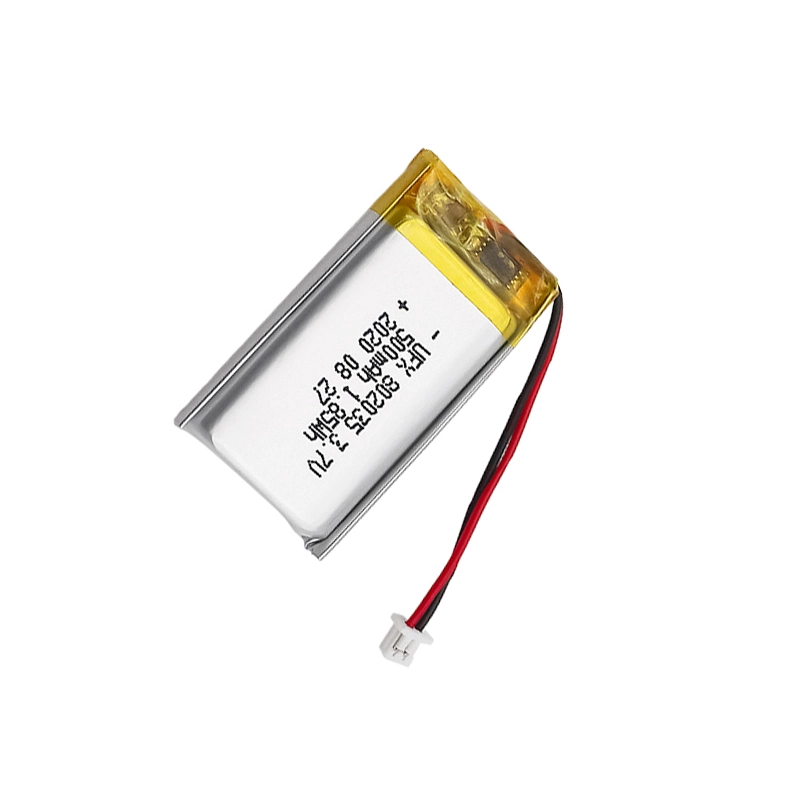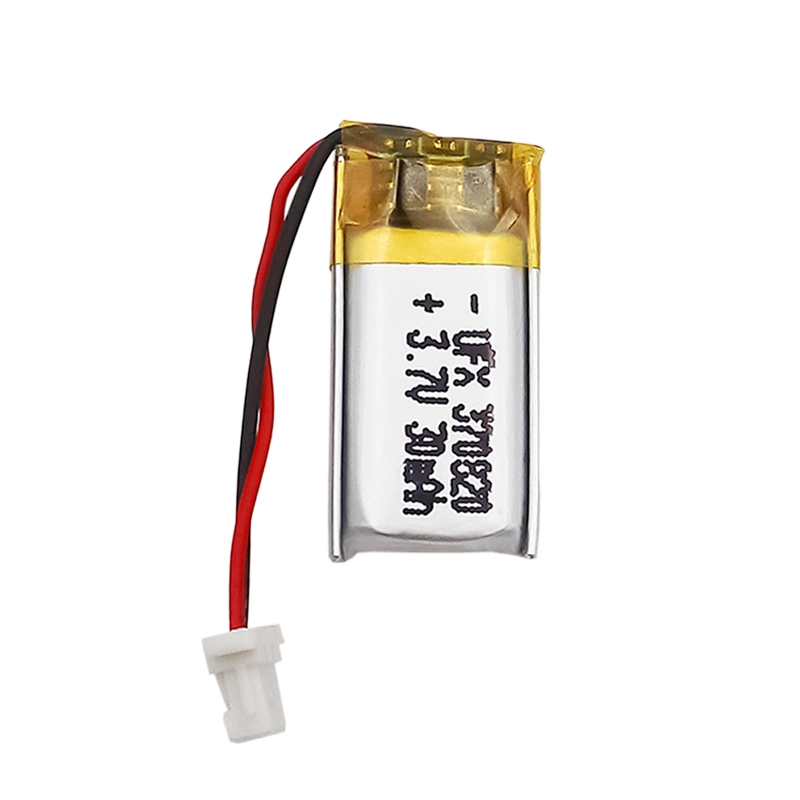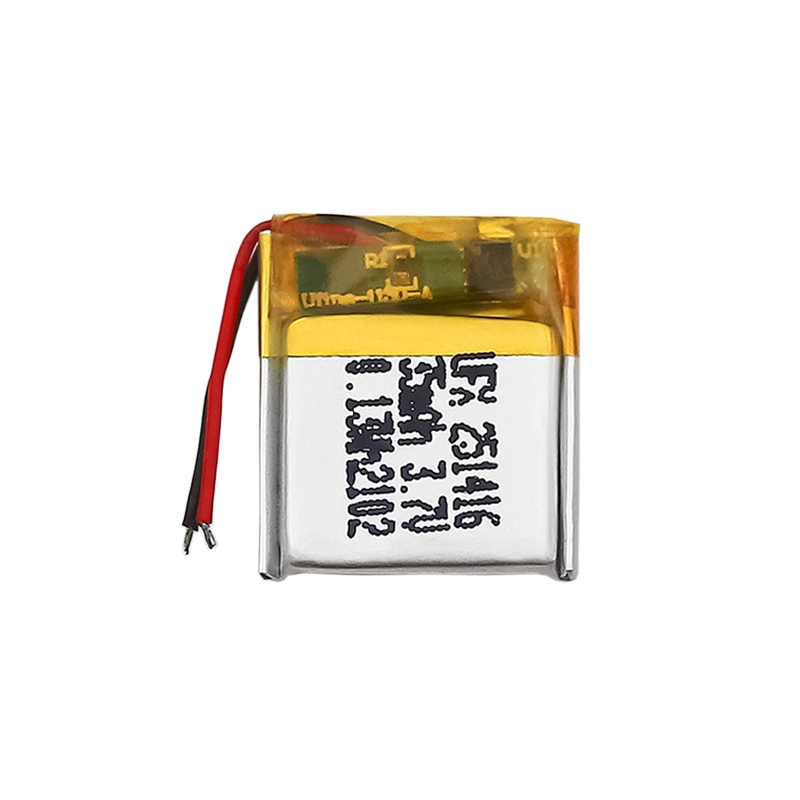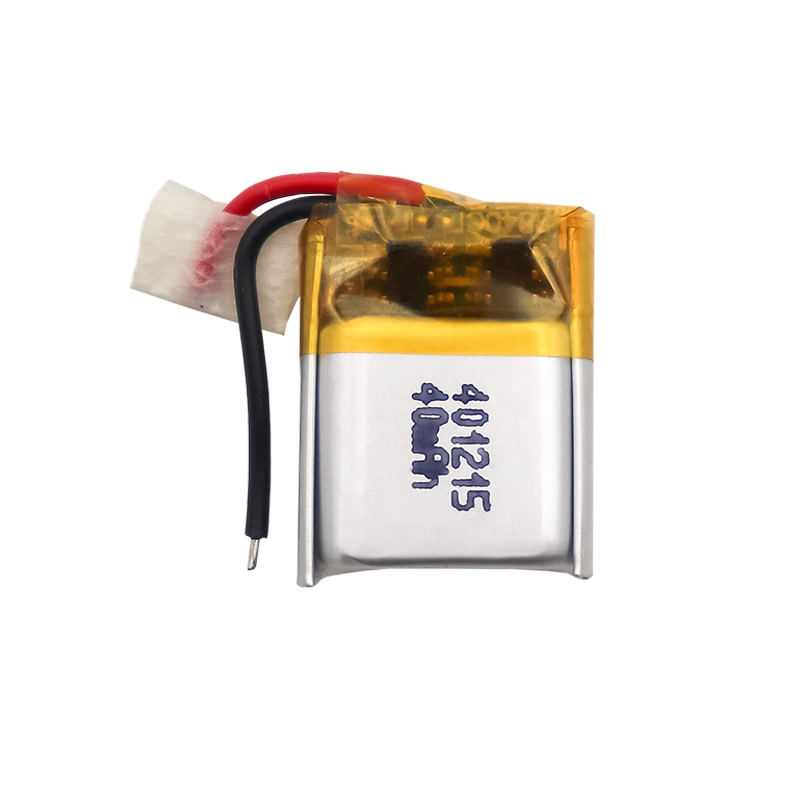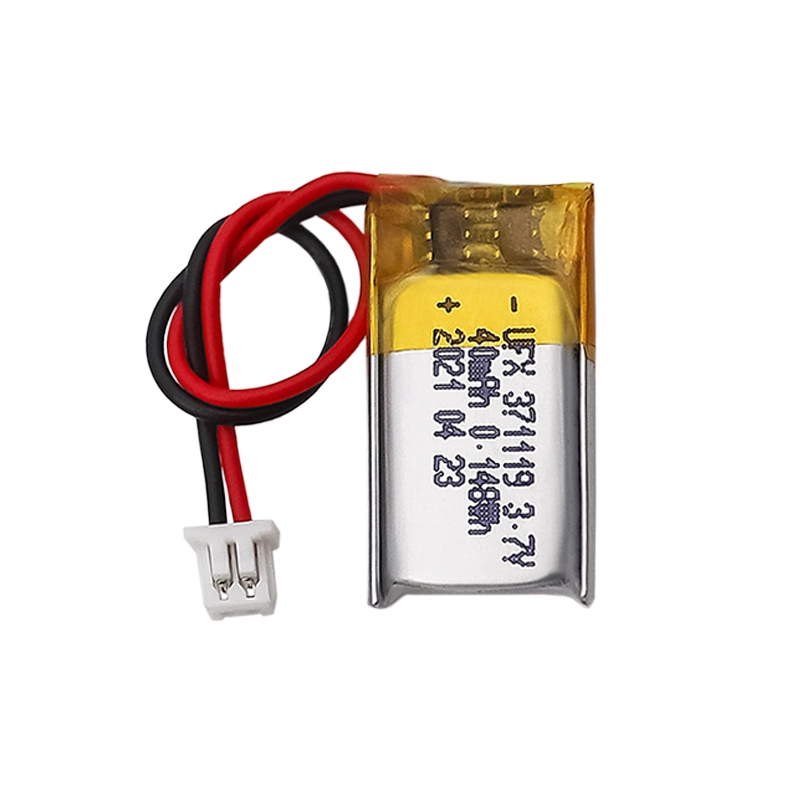-
Product Details
-
Specs
-
Content
-
FAQs

3.7V High-Energy Polymer Power
The UFX802035 3.7V LiPo battery uses advanced lithium polymer chemistry to deliver stable power in a compact design. A small, powerful, and stable energy source — perfect for modern electronics, IoT devices, and portable tools.
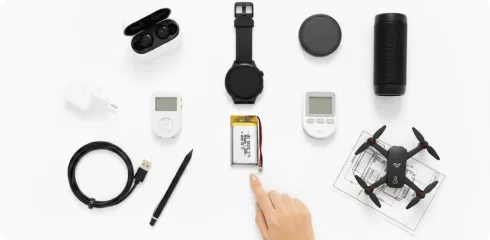
Test Curves of 3.7v Battery
Take a closer look at the battery test curves—see the stability and performance you can trust for all your power needs!
- Cycle Life
- Self-Discharge
- Discharge Rate
- Temp Performance
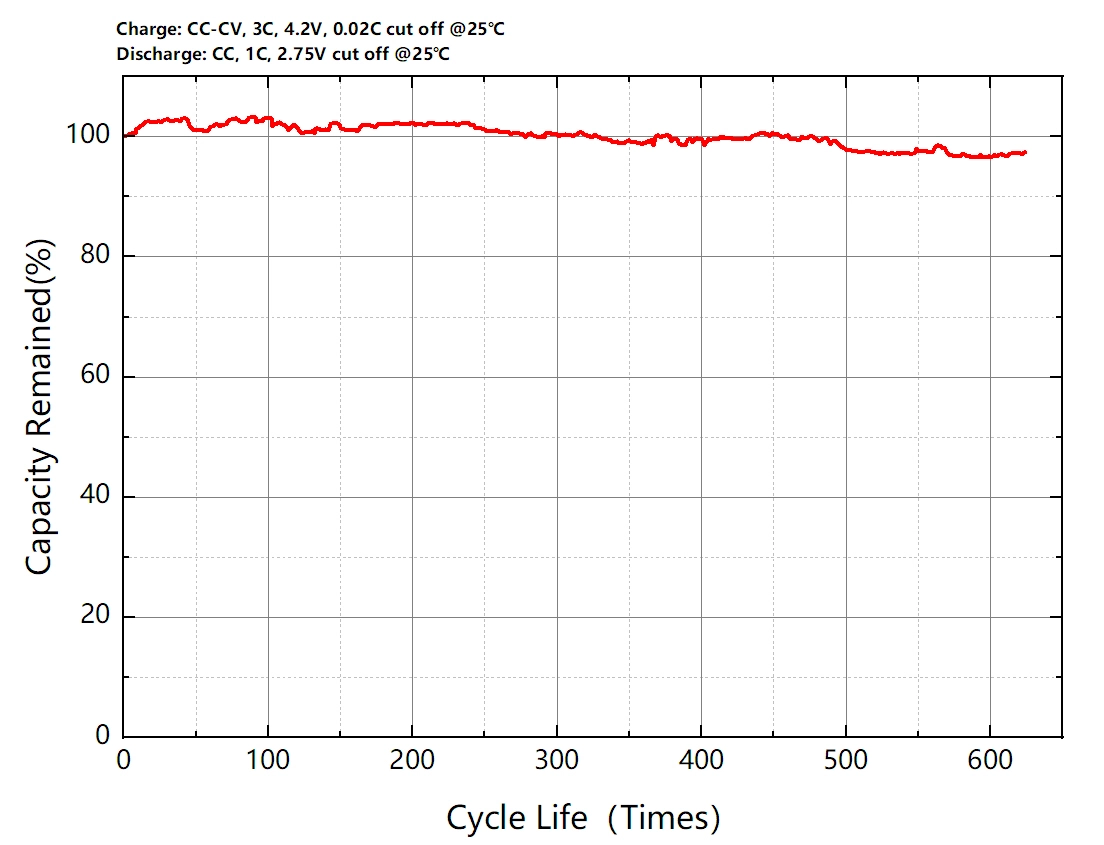
Long-Lasting Power
This battery is a long-lasting powerhouse, retaining over 95% of its initial capacity even after 600 charge-discharge cycles. This outstanding longevity ensures a reliable and consistent performance, making it the perfect choice for devices that require extended use and durability.
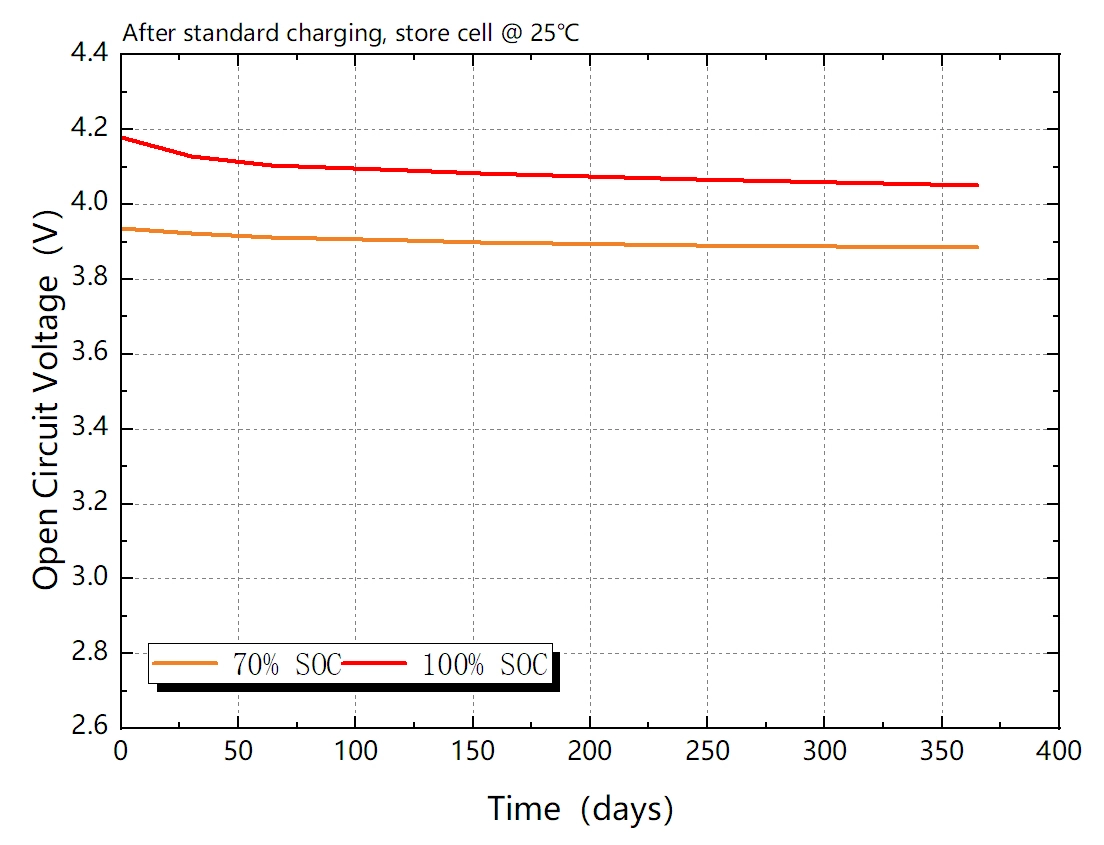
Incredible Charge Retention
With an incredibly low self-discharge rate, this battery holds its charge exceptionally well. After a full year of storage, its voltage only shows a minimal drop from 4.15V to 4.05V, keeping your device ready to go even after long periods of inactivity.
Learn More About Discharge Rate 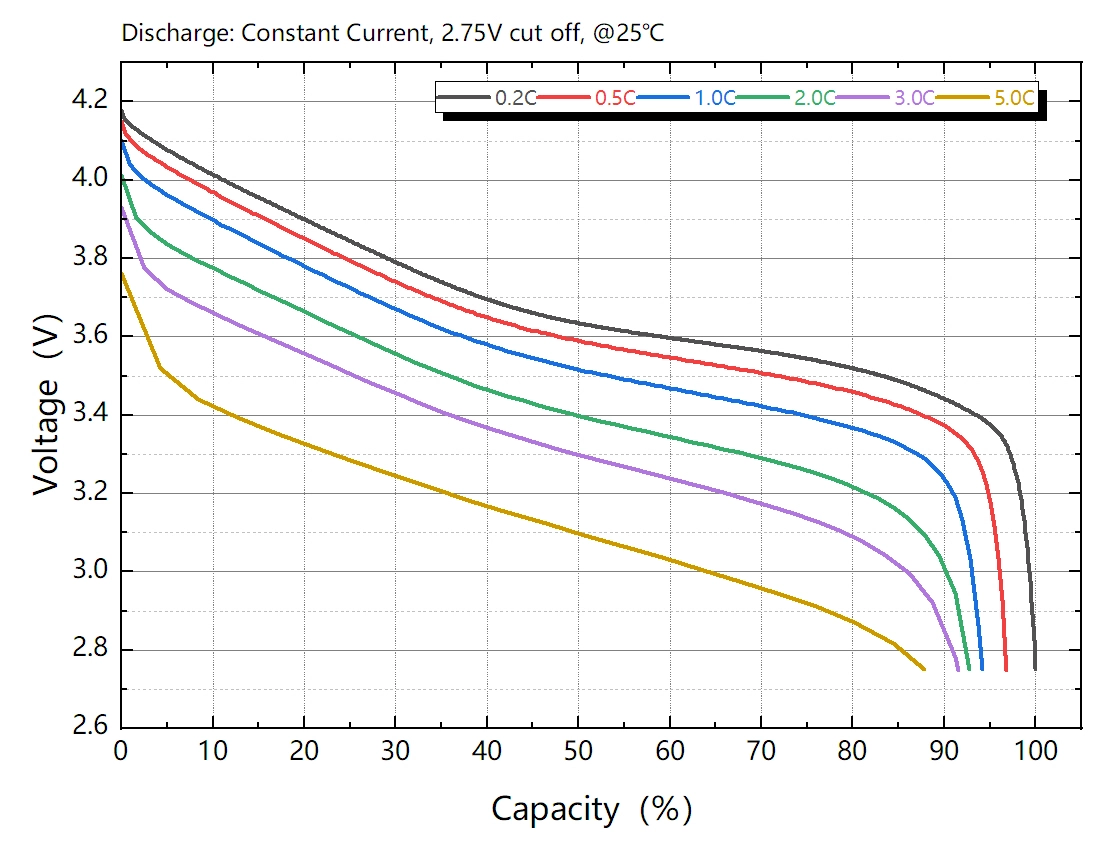
Discharge Characteristics
Experience stable and reliable power delivery. The battery maintains an operating voltage above 3.4V for over 80% of its discharge cycle, ensuring consistent performance. It also delivers high capacity, retaining over 90% even at a high 5.0C discharge rate.
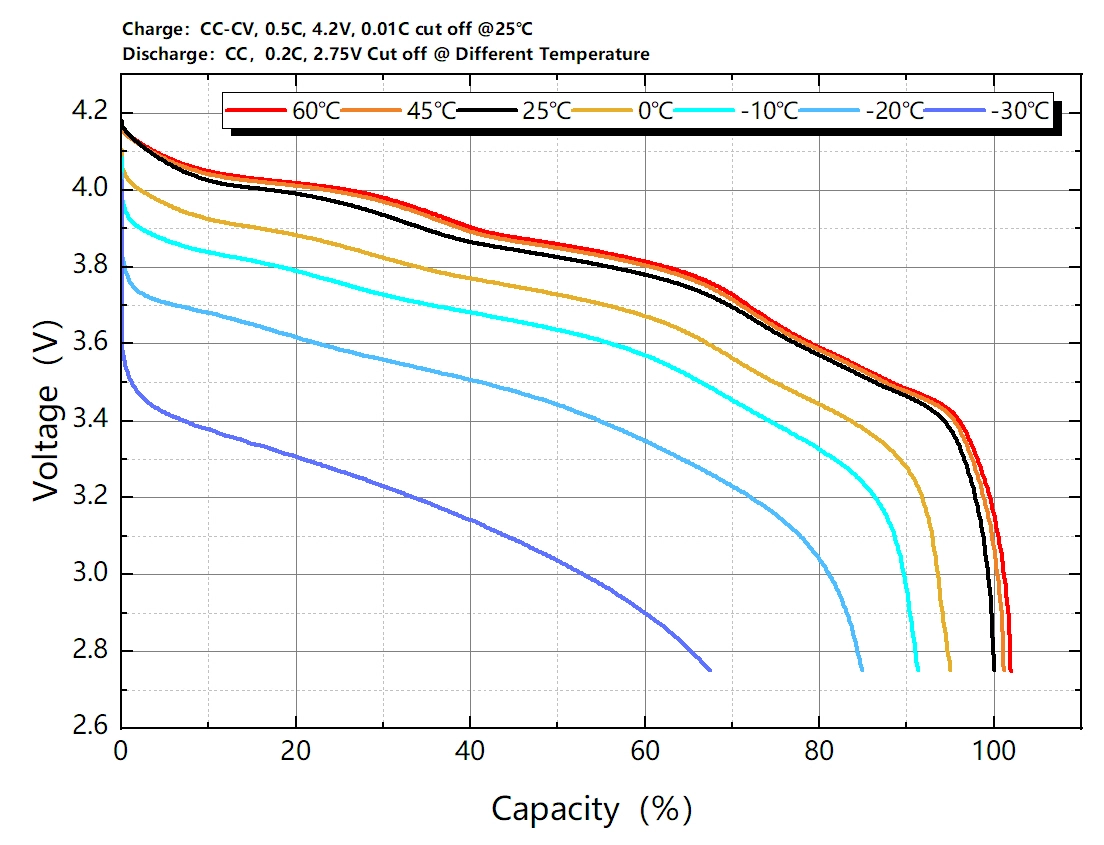
Extreme Temperature Performance
This battery is built for a wide range of climates. It offers consistent, high-capacity performance from 25°C to 60°C. Even in freezing conditions, it remains reliable, providing approximately 65% of its capacity at a frigid -30°C.
Compact Power, Certified Performance
Perfect for projects where size, weight, and performance all matter.
View more certificates 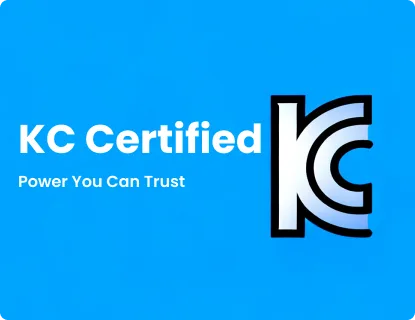
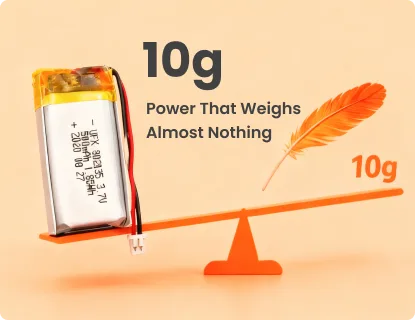
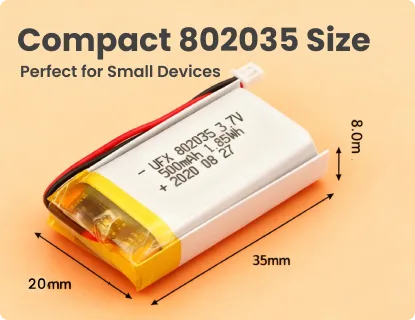
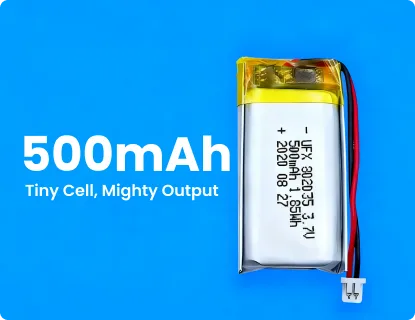
Built-in Protection Circuit
Safer Than Ordinary LiPo Batteries
With Built-in Protection (UFX802035)
- Overcharge Detection – prevents voltage from exceeding safe limits
- Overdischarge Detection – stops deep discharge that shortens battery life
- Overcurrent Detection – controls current to protect internal components
- Short Circuit Protection – instantly cuts off output during short events
Without Protection
- May overcharge or overdischarge, leading to capacity loss or swelling
- Risk of short circuit or overcurrent during operation
- Shorter lifespan and unstable performance
- Requires careful voltage monitoring during use
Factory Direct Supply & Competitive Pricing
Custom Solutions from a Trusted Battery Manufacturer
High-Performance and Popular Choice
Whether you need a standard model or a tailor-made power pack, we deliver batteries that fit your exact voltage, capacity, and size requirements.
- Direct from the factory – best prices guaranteed
- Bulk order discounts available
- Custom size, voltage & capacity options
- Flexible MOQ for small or large orders
- 17 years of lithium battery expertise
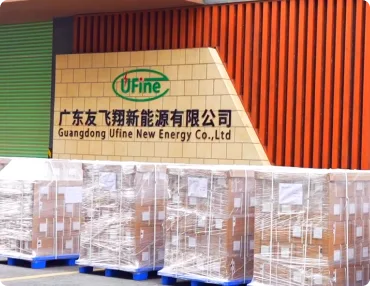
Battery Specification
-
1. Mechanical Characteristics
Cell 802035 PCM Yes NTC No Weight appr. 10g Configuration 1S1P -
2. Electrical Specification
Capacity 500mAh Nominal Voltage 3.7V Energy 1.85Wh Internal Resistance less than 180mΩ Max. Charge Voltage 4.2V Discharge Cut Off 2.4V Max. Charge Current 500mA Max. Discharge Current 500mA Standard Charge Current 100mA Standard Discharge Current 100mA Charging Temperature 0℃ to 45℃ Discharging Temperature -20℃ to 60℃ Storage Temp.Range 1 year at -20℃ to +30℃ 3 mos. at -20℃ to +45℃ 1 mo. at -20℃ to +60℃ Cycle life 100 cycles ≥92% 300 cycles ≥88% 500 cycles ≥80% -
3. Cell protection
Overcharge Detection 4.28V ±50mV (80 to 200msec delay, release 4.08V ±50mV) Overdischarge Detection 2.4V ±100mV (40 to 120msec. delay, release 3.0V ±100mV) Overcurrent Detection 2.5A to 4.5A (5 to 10msec. delay) Short protection Yes
Lithium polymer (LiPo) batteries like the UFX802035 3.7V 500mAh are widely used in portable devices, wearables, and smart electronics. In this guide, we’ll explain how this battery works, how long it lasts, and how to use and store it properly — plus a buyer’s checklist to help you choose the right one.
Part 1. Understanding 3.7V LiPo battery chemistry and structure
A 3.7V LiPo battery uses lithium-ion polymer chemistry, which provides high energy density and flexible form factor. Unlike cylindrical Li-ion cells, LiPo batteries use a polymer electrolyte and aluminum-laminated pouch design, making them lighter, thinner, and more adaptable in shape.
-
Nominal Voltage: 3.7V
-
Energy Density: up to 260 Wh/kg
-
Lightweight pouch structure (the 802035 model weighs only 10g)
-
Customizable size for small devices
This structure allows the 802035 battery to deliver consistent power while keeping the device compact and portable.
Part 2. How long does a 3.7V 500mAh battery last?
The lifespan of a 3.7V 500mAh lithium battery depends on usage conditions, charging rate, and temperature. On average, the Ufine 802035 LiPo battery provides about 300 charge cycles, meaning it can be recharged roughly 300 times before its capacity drops to 80% of the original.
-
Charging and discharging rate (0.5C–1C recommended)
-
Operating temperature (-20°C to 60°C)
-
Proper storage when not in use
With correct usage and charging habits, a 3.7V 500mAh battery can last 2–3 years.
Part 3. How long will a 500mAh battery last in hours?
Battery runtime depends on the current draw (load) of your device. To estimate:
Battery life (hours) = Capacity (mAh) ÷ Load Current (mA)
-
If your device consumes 100mA, a 500mAh battery will last about 5 hours.
-
If it draws only 50mA, you’ll get around 10 hours.
This makes the 802035 battery perfect for low-power electronics like Bluetooth modules, GPS trackers, and small IoT sensors.
Part 4. Ufine 802035 battery connectors and wires
Ufine offers the 802035 3.7V 500mAh battery with high-quality connectors and wires — customizable to match your application needs.
Standard Configuration:
-
Connector: 1.25-2P
-
Wire Specification: UL1571-26AWG
-
PCB Specification: IC DW01 + MOS 8205
-
PCB Dimensions: 14 × 3.8 mm
Custom Options Available: We can tailor connector type, wire length, and protection board according to your device requirements.
Part 5. What to do if a LiPo battery swells (Puffs up)
A swollen LiPo battery is a sign of gas buildup caused by overcharging, overheating, or aging. If your 3.7V 500mAh LiPo battery starts to puff up:
-
Disconnect it from your device immediately
-
Place it in a fireproof container
-
Dispose of it safely at a battery recycling center
Don’t:
-
Puncture or compress the battery
-
Continue using or charging it
Proper charging and storage can prevent swelling and extend battery life.
Part 6. 500mAh battery charger recommendations
To charge a 3.7V 500mAh LiPo battery, use a constant current/constant voltage (CC/CV) charger with:
-
Charging Voltage: 4.2V
-
Charging Current: 250–500mA (0.5C–1C rate)
-
Protection Cutoff: automatic stop at full charge
Avoid using unregulated USB chargers or power supplies — they may cause overcharging or shorten the battery’s lifespan.
Part 7. How to store a 3.7V 500mAh lithium battery
When storing the 802035 battery, keep it in a cool, dry place and partially charged (around 40–60%).
-
Temperature: -20°C to 45°C
-
Avoid humidity and direct sunlight
-
Recharge every 3–6 months if stored long term
Following these tips helps maintain the battery’s chemical stability and capacity.
Part 8. Buyer’s checklist – what to check before purchasing
Before buying a 3.7V 500mAh lithium battery, make sure to verify these points:
-
Size & Dimensions (8×20×35mm) fit your device
-
Capacity & Voltage match your power needs
-
Protection Circuit (Overcharge, Overdischarge, Short) included
-
Connector Type & Wire Length fit your design
-
Certification & Supplier Reliability (KC certified from Ufine)
Choosing the right specification ensures safety, compatibility, and long-term performance.
Part 9. Common mistakes to avoid
⚠️ Using an unprotected LiPo cell without a PCM
⚠️ Overcharging above 4.2V
⚠️ Storing the battery fully charged for long periods
⚠️ Mixing new and old batteries in one pack
⚠️ Ignoring swelling or physical damage
Avoiding these errors will help you get the best performance and safety out of your 802035 3.7V 500mAh battery.
Part 10. Conclusion
The Ufine 802035 3.7V 500mAh LiPo battery combines compact size, stable 3.7V output, and KC-certified safety in one lightweight power source. Whether you need it for IoT devices, wearables, or smart electronics, it’s a reliable choice backed by customization options, factory-direct supply, and 17 years of expertise.
FAQs
-
Can I use the 3.7V 500mAh LiPo battery in any 3.7V device?
Not always. While the voltage is the same, each device has different size, connector, and current requirements. Before using, check that the battery dimensions (8×20×35mm), connector type, and discharge current (up to 1C) match your device’s specifications. -
Is this LiPo battery safe for air shipping?
Yes. The UFX802035 3.7V 500mAh battery complies with UN38.3, KC, and related transport safety standards. -
Can the 802035 LiPo battery be connected in series or parallel?
Yes, it can — but it requires professional configuration. To connect multiple cells in series or parallel, you must use a balanced protection circuit to ensure voltage consistency and safe operation. -
Can I request a custom connector or cable length?
Absolutely. Ufine offers custom wiring and connector solutions, including options like JST, Molex, or PH connectors. You can specify wire length, connector pitch, or terminal type, and our team will assemble it according to your design. -
Does the 3.7V 500mAh battery require maintenance?
Minimal maintenance is needed.
Ready to Power Your Project?
We’ll help you design the perfect power source — tailored to your voltage, capacity, size, C-rate, and performance needs.
Contact Us NowWhat Our Customers Are Saying
We love hearing from you! Your experiences help us improve and inspire others. Check out what our happy customers have to say about our lithium batteries—share your thoughts with us too!
Latest Articles
About Lithium Battery Industry News
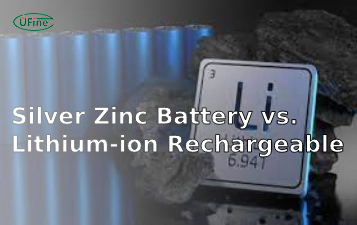
What is the Difference Between Silver Zinc Battery vs. Lithium-ion Rechargeable?
Compare silver zinc and lithium-ion rechargeable batteries: energy density, cycle life, safety, cost, and uses in drones, medical devices, EVs, and electronics.
2025-12-10 Ufine
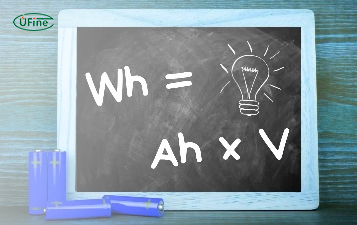
What are Watts and Watt Hours in Battery?
Understand watt vs watt-hour in batteries: key differences, how to calculate capacity, and why they matter. Includes free comparison table.
2025-12-10 Ufine
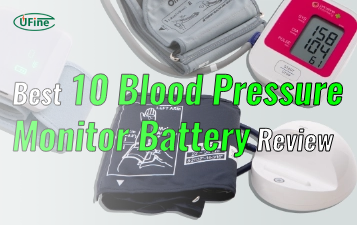
Best 10 Blood Pressure Monitor Battery Review: Finding the Most Reliable
Are you looking for a reliable Blood Pressure Monitor battery? Here is a complete guide with the top 10 best blood pressure monitor batteries.
2025-12-10 Ufine


